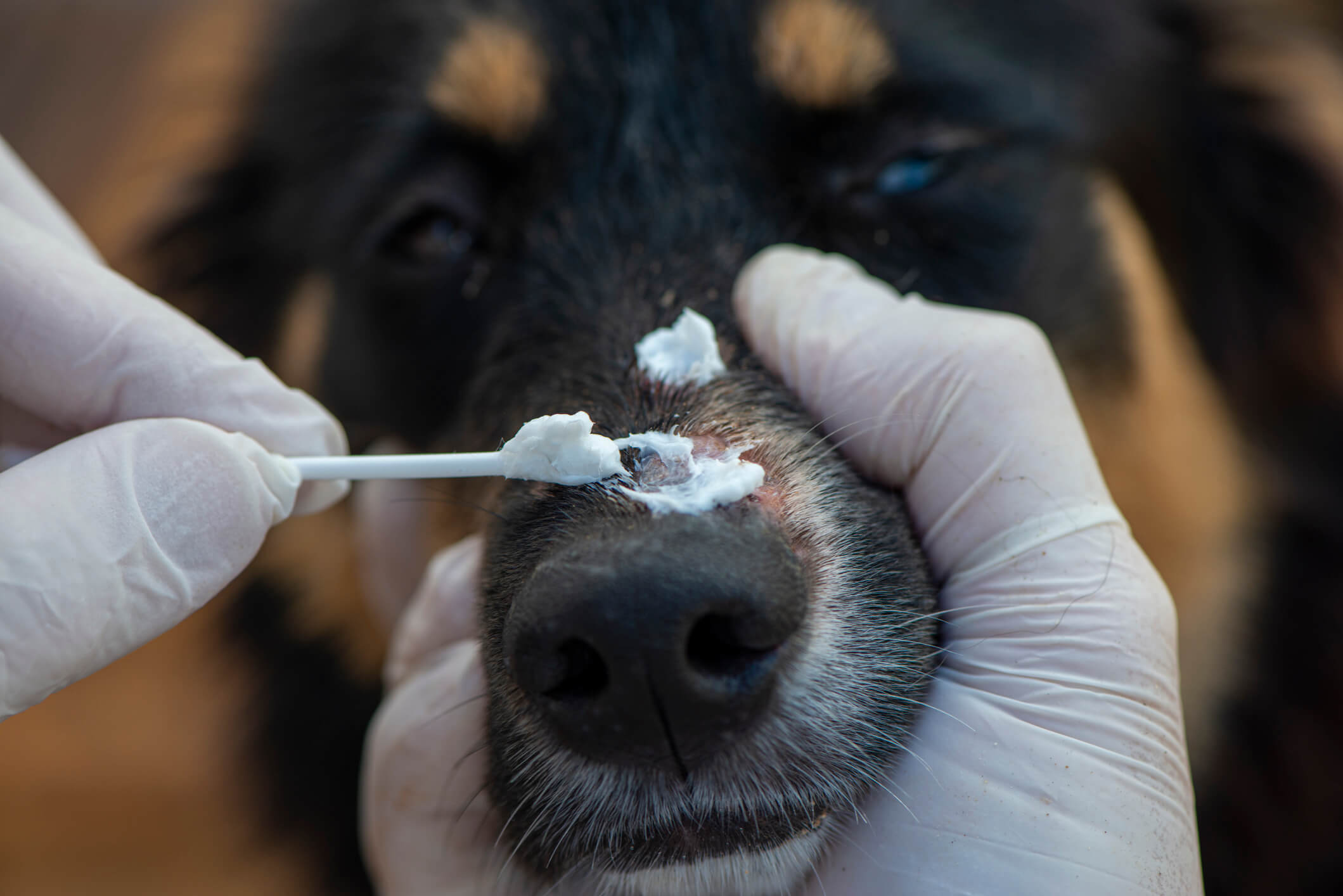
Pet Acne: What Is it and How Can You Treat It?
Humans are no strangers to blackheads and zits. Acne plagues our skin for a number of reasons, and it can be difficult (and sometimes painful!) to get rid of. But did you know that pets can suffer some of the same skin afflictions?
The way pets experience acne is similar in some ways to humans, but different in others. Here’s what you should know about this irritating skin condition.
What is pet acne?
Acne occurs when hair follicles become clogged with oils (sebum) and dead skin cells. This can create inflammation and the appearance of spots like blackheads. Bacteria trapped in this inflamed area begin to reproduce, creating an actual infection. To fight it, the body sometimes releases white blood cells, and this can create the gross pus that oozes out of pustules.
Pet acne is not caused by the same things as human acne. While hormones often trigger oily skin, which clogs pores and allows bacteria to thrive on human skin, pet acne is not believed to be hormone-induced.
Trauma to the hair follicle (such as repeated contact with a food bowl) is one potential cause of pet acne. If the hair breaks off close to the skin, the follicle beneath might become inflamed and clogged. Pet skin can also be irritated by allergies to fleas or environmental substances or fungal spores.
The condition is also believed to have a genetic component. Long-haired cat breeds and certain dogs like Golden Retrievers and Mastiffs are more susceptible to acne. Additionally, dogs with short coats and wrinkly skin like Boxers and Great Danes might develop acne more often because their skin folds trap bacteria and skin cells.
What pet acne looks like
Blackheads and pimples are most likely to pop up on your cat’s or dog’s face, specifically their chin. However, any follicle on their body has the potential to be clogged and infected, so acne can occur just about anywhere. The chest and genital region are two more areas commonly plagued by acne.
Acne in pets can look very similar to acne in humans. The area might look inflamed and red and could be painful to touch. There might be black, brown or red spots, whether alone or clustered together. Or, there might be true pimples with white heads that might ooze pus or blood.
Because acne can cause swelling, irritation and itchiness, your pet might pay more attention to the affected area than usual. You might not notice a problem until you spot them licking, biting or pawing at the acne throughout the day.
How to treat pet acne

Fortunately, pet acne is relatively easy to treat! The main concern will be keeping the area clean and preventing your pet from irritating it further. If your furry friend continues to lick or bite at their acne, they could introduce even more bacteria and cause a more serious infection. Therefore, you’ll want to treat the spots as soon as you notice them.
The number-one rule of pet acne is similar to that of human acne: Do not pop your pet’s pimples! You might think you’re offering your pet relief by squeezing or picking at their inflamed skin, but you can actually cause more damage. Popping pimples can rupture the hair follicle, cause more inflammation and even produce scarring on your pet’s adorable face.
Applying a warm compress to your pet’s acne can help draw pus to the surface and clear the acne up on its own. Natural treatments like herbal antibiotic creams, aloe vera or coconut oil can also soothe inflammation and help clear away acne (just make sure your pet doesn’t lick it off!).
However, if acne is a persistent or painful problem for your cat or dog, talk to your vet about medicated topical treatments. They might prescribe your pet a medicated shampoo or wipes or benzoyl peroxide gels or creams to apply routinely. It’s important that you never apply acne creams formulated for humans to your pet’s skin! These products may contain toxic ingredients that can irritate your pet’s skin further or make them feel sick.
Prevent your pet from painful acne
Although acne can crop up randomly, there are a few ways to keep it from irritating your pup or cat. Hygiene is one of the best preventative measures. If your pet tends to get food crumbs and water over their face and chin, wipe them off with a damp washcloth after they eat. Also make sure you’re cleaning their food and water bowls regularly to remove bacteria and use stainless steel or ceramic bowls instead of plastic ones, which harbor germs.
More in-depth cleaning might be necessary for dogs with lots of skin folds, so dirt and bacteria aren’t trapped. Groom your pet regularly, whether that’s giving dogs frequent baths or brushing your cat, to make sure their coat and skin is in great condition.


